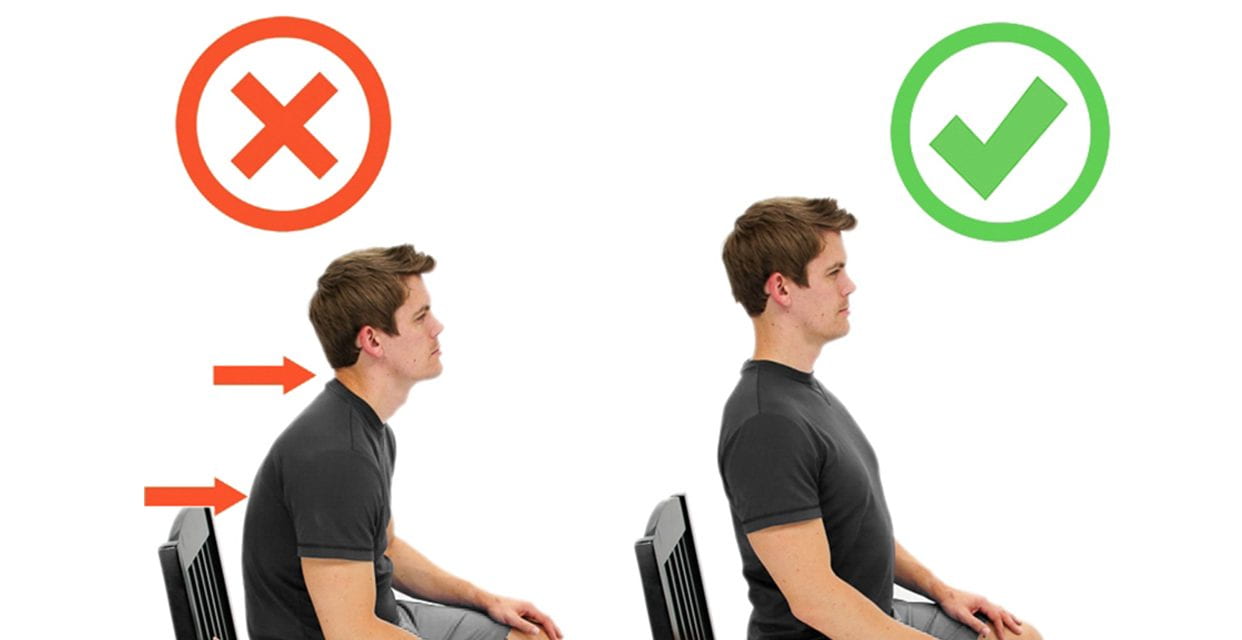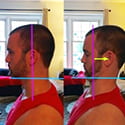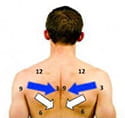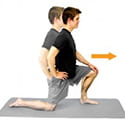To say we are living in unprecedented times would be stating the obvious. Closures of gyms, recreational spaces, and limits on social activity make it difficult to stay active. Combine this with a great deal of the workforce now working from home and there exists a recipe for postural disaster. The following are a few quick tips that will help prevent overuse injuries and issues due to a prolonged sitting posture.
Ergonomics is the science of designing the work environment, equipment, tasks and job to the worker. Good ergonomics is proven to lessen muscle fatigue, increase productivity and reduce the number and severity of musculoskeletal injuries (Government of Canada, 2011) (Healthwise, 2018). The first step in preventing overuse and repetitive injury when working from home is to follow a safe, ergonomic home office set up guideline. There are several online resources to assist in an ideal home office including the MacEwan University Health, Safety and Environment, Canadian Centre for Occupational Health and Safety and MyHealth Alberta. However, given some of the limitations of social distancing, you may have to be a bit creative. Using old textbooks as a footrest and propping your laptop up on a few home delivery boxes are all part of the work from home aesthetic during times of limited access to office resources.
Even with a home office that complies with all the best ergonomic recommendations, the increase in prolonged sitting due to working from home can wreak havoc on your posture and musculoskeletal health. Below are illustrations of common damaging postural positions and the ideal positional corrections and some simple exercises that will help prevent, or at the very least mitigate, some of the negative impacts of prolonged desk work follow the postural examples.
Posture
Proper Cervical and Spinal Posture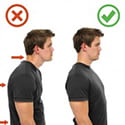
Good posture positions your head over your shoulders so that your head is not protruding forward. Your ears should be over your shoulders.
Begin by correcting your low back so that it is not slouched. This will correct much of the spine. You may also need to perform a small chin tuck as well. Shoulders should be relaxed with your shoulder blades drawn slightly down your back.
The image on the right shows how you should position your head and spine throughout the day. This might be difficult at first but over time will get easier as your body adjusts.
Proper Cervical and Spinal Posture – Seated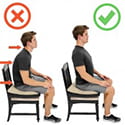
Follow the same posture pointers in the previous example, plus your core should be active to support an upward position of your upper body.
Exercises
- With good sitting posture, tuck your chin back as far as possible without lifting off the bottom line.
- Return to neutral.
- Repeat, with each rep trying to move further back.
- Perform 10 times, once an hour.
- Start with a good sitting posture.
- Three separate shoulder blade movements- 10 movements for each, once an hour
- First – lift the top of the shoulder up towards ear (12 o’clock, up towards ear)
- Second – lower shoulder blade down towards the ground (tickle feet) (6 o’clock, down towards the ground)
- Third – bring your left shoulder blade towards the other one to squeeze the muscles in between the shoulder blade and spine (from 9 o’clock, left shoulder, and 3 o’clock, right shoulder, pull toward the spine)
- While kneeling down on one knee, lean forward and bend your front knee until a stretch is felt along the front hip area of the knee-down side.
- Keep your torso upright and your core active.
- To increase the stretch, slightly posteriorly tilt your pelvis by bringing your tailbone in line under the centre line of your body.
- Hold for 30 seconds per side, twice an hour.
Standing Hip Flexor Stretch – Knee on Chair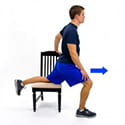
- Progression of the previous stretch.
- While standing, place your knee on a chair as shown.
- Next, bend your standing knee to stretch the front of the thigh on the leg that is on the chair.
- Keep your torso upright and your core active.
- Hold for 30 seconds per side, twice an hour.
Exercise images available from Hep2go. Hep2Go is a free resource exercise database with instruction and the ability to design and customize your own at-home exercise program.
Government of Canada. (2011, September 21). The Fundamentals- Ergonomics.
Healthwise. (2018, September 20). Office Ergonomics. Myhealth.Alberta.ca.
By Meaghan Maynard
Meaghan Maynard is a full time certified athletic therapist at MacEwan University Sport and Wellness, serving the Griffins varsity athletes, students, staff and the public. She holds a Masters of Science degree in Rehabilitation Science from McMaster University and her focus is to ensure each client is educated about their specific injury, while the therapist and client work together to achieve rehabilitation goals. Meaghan loves working as an athletic therapist because it gives her the opportunity to support clients from initial injury to returning to work and play.

